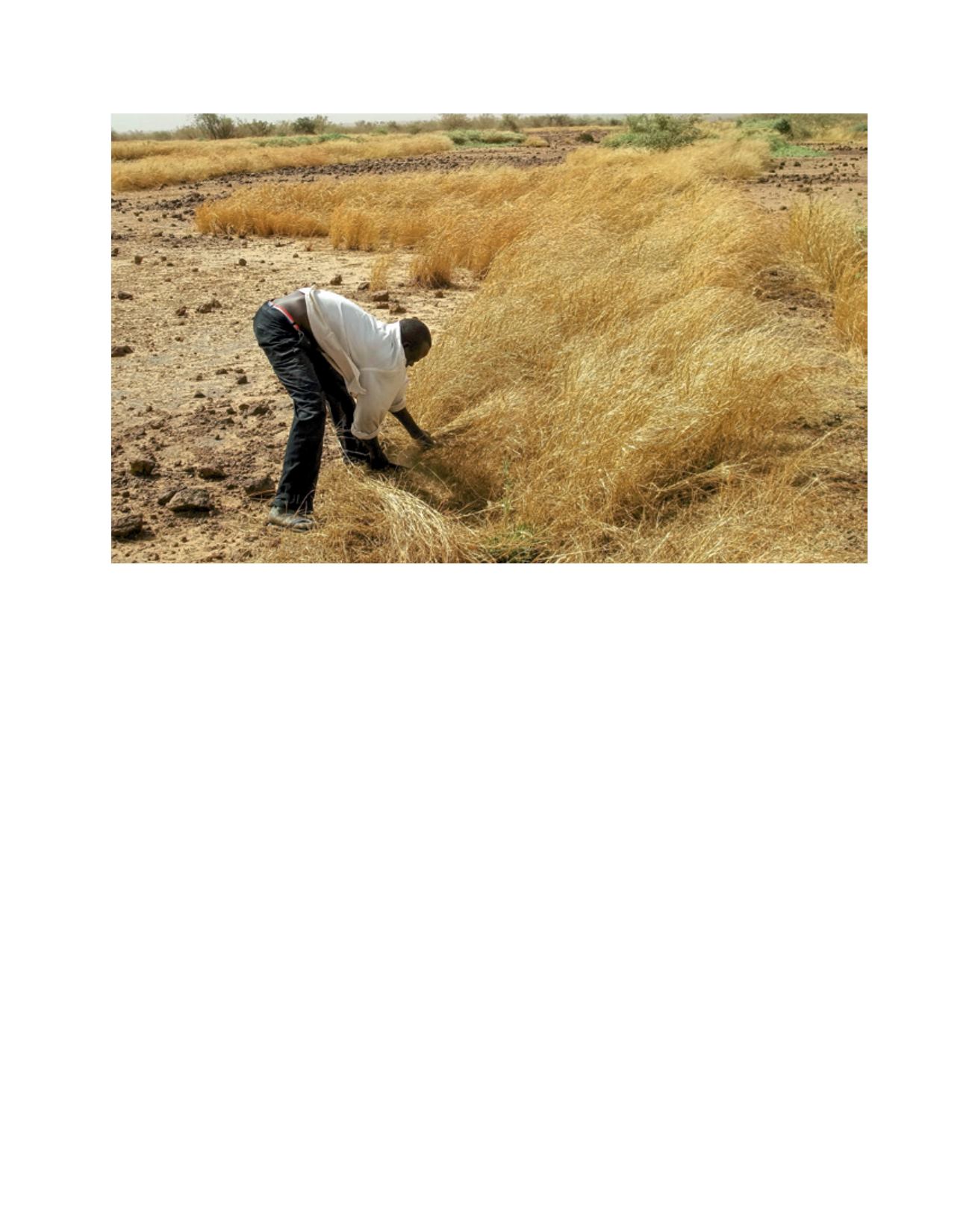

[
] 32
solid fillers. These structures must be strengthened by biologi-
cal plantation to ensure durability.
Results achieved
The implementation of this first phase of PLCE has yielded
very encouraging results. These include the development and
adoption of a master plan for siltation control in the Niger
basin including an action plan and an investment programme;
the implementation of actions to protect and fight against the
siltation of 41,600 ha in Burkina, Mali and Niger; beneficiaries’
use of technical and planning tools to protect and fight against
erosion and silting through a participatory approach; training
of 100,000 farmers in the different technical areas for degraded
lands restoration; and the installation and supervision of 217
Village Committees for Natural Resources Management.
The PLCE programme implementation has generated other
positive environmental and socioeconomic effects including
restructuring and improving the texture and fertility of soil,
revegetation (grass and trees) and the reduction of rural youth
exodus in the basin. The main lessons learned are that:
• reversing the trends of land and water degradation is
possible if you put in adequate human, financial and
technological package resources
• fighting against desertification and Niger River siltation
should be a cross-border/multinational and multisectoral
issue with strong involvement of all the stakeholders
which augers well for accountability in the whole basin.
The implementation of PLCE in the Niger basin helped to
achieve the desired results for all the planned activities. This
performance reflects the effectiveness of an intervention
strategy based on a participatory approach that enabled the
empowerment of benefiting communities through an effec-
tive decentralization of financial resources and of natural
resources management.
In order to consolidate the significant benefits and
to bring actions across the entire basin, the African
Development Bank and other NBA partners (including
UEMOA, KfW, the Global Environment Facility and the
West African Development Bank) commenced, in 2014, the
formulation of an ambitious (scaled-up) siltation control
programme covering all nine countries of the basin. This
is called the Integrated Development and Adaptation to
Climate Change Program in the Niger Basin (PIDACC/
BN). Its overall objective is to contribute to the improve-
ment of livelihoods and resilience of people in the rural
communities through sustainable management of natural
resources in the basin. Specifically it aims to reduce the
silting process of the Niger River, improve communities’
adaptive capacity to climate change, and improve the inte-
grated management of natural resources in the Niger basin.
PIDACC/BN will focus on developing the resilience of
ecosystems and natural resources through the protection of
natural resources and ecosystems and the strengthening of
shared management of water resources; and on developing
the resilience of rural communities through the construc-
tion of multipurpose infrastructure and social protection.
The estimated cost is US$300 million. The programme
preparation is to be finalized in 2016 for effective imple-
mentation in 2017.
Bench restoration in the Tillabery region, Niger
Image: AfDB
L
iving
L
and
















